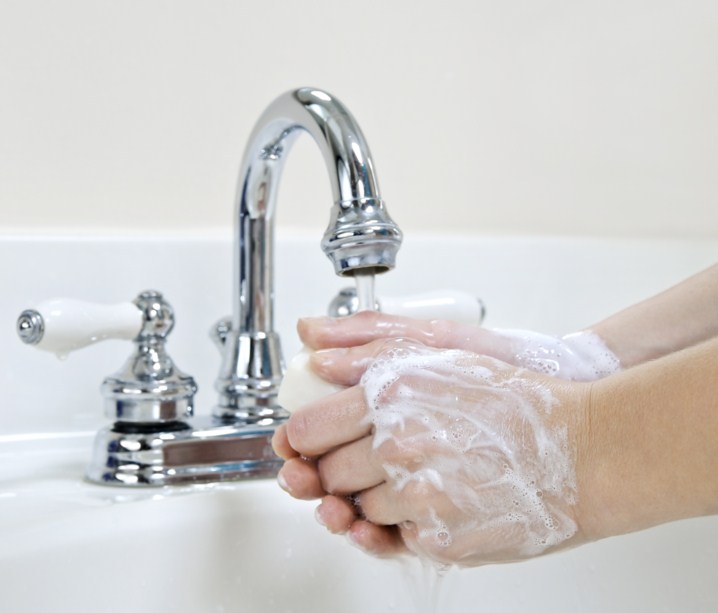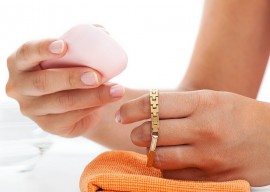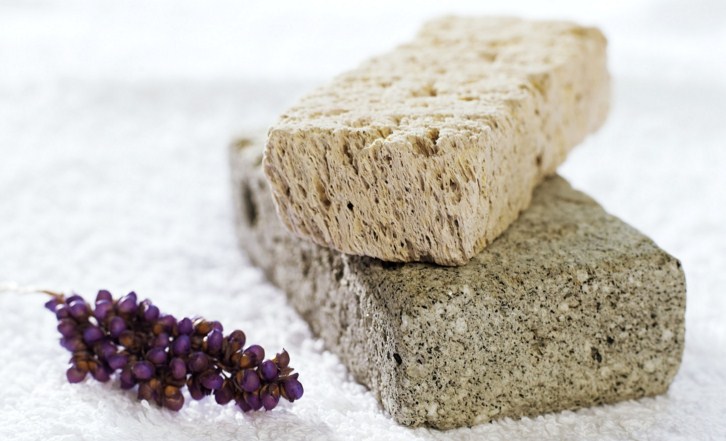Washing foam from hands: safe means for cleaning skin
When working with a mounting gun, despite all the precautions, foam tends to get on your hands every now and then. Even using gloves does not always prevent stains. How to wash foam from hands, and is it possible to avoid skin damage? After all, this substance clings to it with the same success as to the porous surface of the wall.
Cleaning your hands of fresh foam
As long as the composition has not polymerized, it can be easily removed using various solvents. The most popular is acetone, which is found in different containers. In your home it may be:
- in cylinders with a cleaning agent for the mounting gun;
- in glass vials for household use;
- in nail polish removers.
It dries out the skin, but does not cause serious irritation if the foam is worked quickly. Compositions such as White Spirit and other solvents can cause itching and burning on the skin, and are worse at removing polyurethane foam. But in the absence of acetone they will also work.

Products such as gasoline and vegetable oil are also used to clean the skin. With them, you will have to scrub your hands for a long time and with effort, but they do not allow the polymer to get stronger and form a crust. This is precisely what is important to avoid when foam gets on your skin.
After treating with any composition, hands should be washed with running water and soap. This is important to do in order to cleanse the skin of dissolved polymer. Failure to wash your hands promptly will result in your efforts being wasted and a thin film will still remain on the skin for several days.
What not to do
Do not try to wash the foam with water, even using laundry soap, powder and strong degreasers, of which there are many in any home. Water provokes rapid hardening of the substance, and household chemicals have no effect on it at all. The result of such attempts will be to spread a thin layer of foam over a large area of the skin, and such a crust will then be more difficult to remove.

You won’t be able to remove fresh foam with a dry cloth or sponge; the result will be the same. However, you should not resort to aggressive means:
- alkalis;
- acid;
- solvent for acrylic paint.
These substances cause chemical burns, but have no effect on polyurethane foam. But skin damage can be very serious. Trying to cut off an already hardened layer with a knife or blade is also dangerous.
To clean various surfaces, the pharmaceutical product “Dimexide” is used, which is a strong antiseptic. Often, inexperienced professionals make the false conclusion that the medical product is safer for the skin than any solvents. But it can provoke a severe allergic reaction when used in this way, and it is better not to use it.

What if the foam has already hardened on the skin?
If you have not found a suitable solvent, let the foam swell and harden properly. Such a lump comes off quite easily from the skin with careful, slow and smooth movements. Residual marks can be removed with a nail file or pumice stone, or allowed to disappear on their own within 2-3 days.

If, through carelessness, the substance was smeared and hardened into a thin crust, it will be difficult to wipe it off. You can use pumice, sandpaper, or a stiff brush. You need to act gently, without damaging the skin and systematically rolling off the remaining film with the tool. For a better effect, you can first hold your hand in warm vegetable oil.
After work, be sure to lubricate your hands with a rich cream, because after removing the remaining foam, there will definitely be microdamages on the skin. However, redness and irritation will subside within 24 hours.
